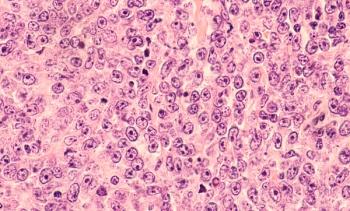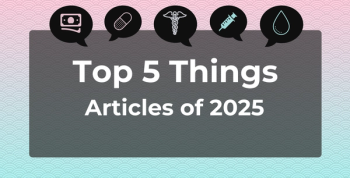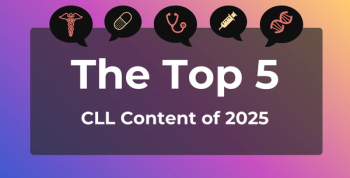
End of PEPFAR Funding Could Lead to Tens of Thousands of HIV Deaths
Key Takeaways
- The PEPFAR funding freeze could lead to tens of thousands of additional HIV infections and deaths in sub-Saharan Africa.
- The STDSIM model estimated significant increases in HIV incidence and mortality under various funding interruption scenarios.
Countries in sub-Saharan Africa could see thousands of deaths from HIV due to cuts to the US President’s Emergency Plan for AIDS Relief (PEPFAR), underscoring the necessity of reinstating the program.
The Trump administration froze all funding for the President’s Emergency Plan for AIDS Relief (PEPFAR) soon after the inauguration in January 2025.1 This freeze in funding could cause not only an increase in incidence of
Although a limited waiver option was announced by the Trump administration on February 1, 2025, for access to life-saving medications for HIV, PEPFAR funds have not been used to restart treatment activities due to delays in waiver applications and implementation, leaving populations in vulnerable communities at increased risk of adverse outcomes due to lack of treatment. Other programs, such as those supported by United States Agency for International Development, were also stopped in February, which further weakened aid in the area. The present study aimed to use a simulation model to estimate the effect of these funding cuts, estimating mortality and incidence of HIV, in Ethiopia, Kenya, Malawi, South Africa, Tanzania, Zambia, and Zimbabwe.
The STDSIM model, which is able to capture transmission dynamics in specific countries, was used for this study to estimate the impact of treatment interruptions on health. A full implementation of the executive order was estimated in 2 groups where the proportional scenario estimated the number of people on antiretroviral therapy (ART) affected is proportional to the PEPFAR share of the total HIV budget, and the realistic scenario focuses on the critical components of PEPFAR funds in the treatment delivery system. The researchers estimated that 90% of all individuals using ART in each country were affected, except for Kenya and South Africa where 75% and 50% of those on ART would be affected, respectively. These scenarios were contrasted with waiver scenarios that estimated the effects if programs resume after 4 weeks or after 8 weeks. These scenarios do not assume full recovery of treatment even after the waiver goes into effect.
The baseline estimate of no pause in funding estimated 70,000 new infections over 3 months. The realistic and proportional estimates indicated 80,000 and 75,000 new infections, respectively, over 3 months. The waiver scenario of 8 weeks correlated to an estimated 77,000 new infections, and the waiver at 4 weeks correlated to an estimated 73,000 new infections. These infection levels stabilized after 1 to 2 years in the waiver scenarios and 5 years assuming the continuation of the executive order.
The executive order realistic and proportional scenarios could lead to an excess of 103,000 and 81,000 HIV infections, respectively, compared with an excess of 50,000 in in the 8 weeks waiver scenario and 35,000 in the 4 weeks waiver scenario.
The mortality related to HIV was estimated to be 36,000 by 2030 in the scenario where funding is not paused. The realistic scenario related to the executive order estimated 44,000 deaths, and the proportional scenario estimated 42,000 deaths. The waiver scenarios could lead to 39,000 deaths in the 8 weeks scenario and 37,000 in the 4 weeks scenario, where HIV coverage would take 1 to 2 years to return to previous levels. The 90-day funding freeze could result in 74,000 additional deaths due to HIV in all countries combined if there is a total collapse of treatment, which would decrease to 60,000 deaths if the program collapses proportionally.
There were some limitations to this study. The model did not account for specific impacts of the freeze on PEPFAR funds. The effects of an increased development of HIV resistance following treatment interruption were also not been estimated, and there is uncertainty surrounding how the reinstatement of PEPFAR funds would be conducted, which could limit the conclusions of this analysis.
However, the authors were able to conclude that the ceasing of funding from PEPFAR would have numerous adverse effects on countries in sub-Saharan Africa, with this analysis only estimating incidence of HIV and mortality related to HIV in less than 10 countries in Africa.
“The number of excess HIV deaths will be substantially higher because our study only covers about half of the total population living with HIV in Africa,” the authors wrote. “The losses of life and health that we show should compel the United States government to rapidly and fully reinstate PEPFAR, one of the most successful health programs in the history of public health.”
References
1. Schreiber M. Trump’s ‘stop-work’ order for PEPFAR cuts off anti-HIV drugs for patients. NPR. January 28, 2025. Accessed July 8, 2025.
2. Hontelez JAC, Goymann H, Berhane Y, et al. The impact of the PEPFAR funding freeze on HIV deaths and infections: a mathematical modelling study of seven countries in sub-Saharan Africa. EClinicalMedicine. 2025;83:103233. doi:10.1016/j.eclinm.2025.103233
Newsletter
Stay ahead of policy, cost, and value—subscribe to AJMC for expert insights at the intersection of clinical care and health economics.







































